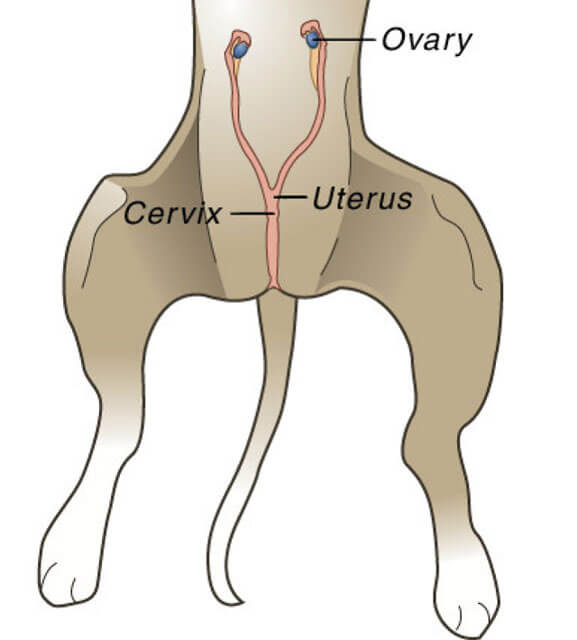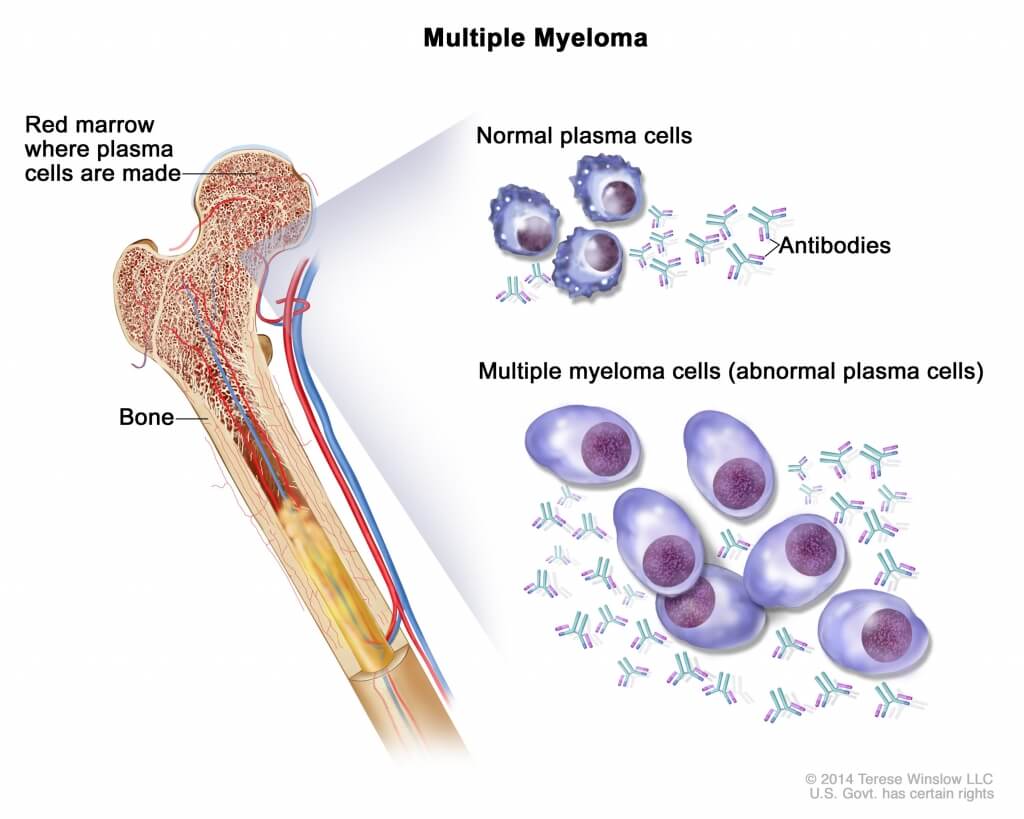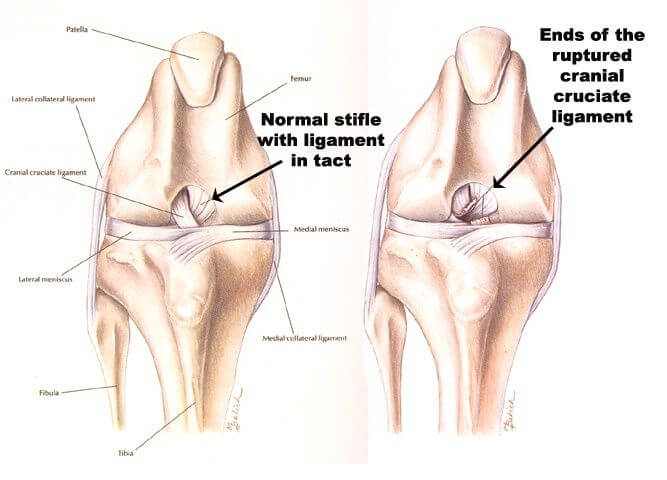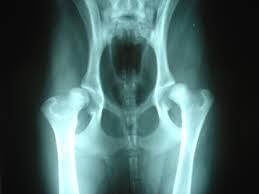It is hard to find a vet today that would recommend anything but early dog neutering, certainly before they are sexually mature, often around six months of age. The reasons given are always the same, to prevent unwanted babies and long-term health benefits, including a reduction in cancer.
However, unlike the appendix where it’s absence is not noticed in daily routine, the reproductive (or sex) organs play a whole host of hormonal roles that stretch far beyond the manufacturing of babies. Like dry food, parasite control, annual boosting and casual steroid shots, these things are not without consequence for the patient and rarely are the consequences ever discussed with the owner. People should be able to make decisions based on all the facts available, not just some of them.
 What are Gonads?
What are Gonads?
In male mammals, the gonads are the two testes, and in females, the gonads are the two ovaries.
What Do The Gonads Do?
The gonads are best known for making gametes (single-celled germ cells), which is sperm in males and eggs in females. These two cells merge inside the female to commence the formation of a baby. However, the gonads also produce a variety of hormones, including the female sex hormones oestrogen and progesterone; and the male hormones including testosterone and androsterone, and, men necessarily have some of the female hormones, and women some of the male hormones.
What do the Sex Hormones Do in Dogs?
While sex hormones in males and females function primarily in the whole “sex” business from conception to baby birth, they also play pivotal roles in the maintenance of body muscle and bone growth.
Testosterone: Testosterone’s dramatic effects can be clearly seen in lanky 13-year-old males. It controls all the typical puberty bits in males such as the growth of the adams apple, facial and body hair to the height and muscle mass of the individual. Adults testosterone continues to function in maintaining muscle strength and mass, and it promotes healthy bone density, as well as reducing body fat (one reason why spayed pets can put on weight).

Oestrogen: Oestrogen too functions in skeletal growth. At puberty, oestrogen promotes skeletal maturation and the gradual, progressive closure of the epiphyseal growth plate (plates of cartilage at the end of bones, which are responsible for laying down new bone). Oestrogen also functions in maintaining the mineral acquisition of the bones.
What is Dog Neutering?
Female dog neutering or ‘spaying’ a female animal involves removing the womb and ovaries (an ovaro-hysterectomy). Males are castrated whereby the testicles are surgically removed. This is done before dogs come into puberty (i.e. start producing sex hormones for the first time) which is very approximately 6 months in males and around 9 months in females, though breed and body size play large rolls here. General advice from the majority of veterinary circles is that responsible dog owners neuter at 6m months. In other countries, it is much earlier. Both operations are carried out under general aesthetic.
Benefits of Neutering
The number one reason for removing the sex hormones is to prevent unwanted breeding, hence those on the front line of mopping up all our unwanted pups are very big fans. The major health benefit constantly cited is to prevent the possible occurrence of testicular cancer, perianal cancers and ovarian cancers in dogs and cats. Other reasons often cited is the spread of inferior genetic traits and to reduce problematic behaviour including male-male aggression around females in heat and the roaming behaviour of both males and females when love is in the air.
The Scientifically Proven Negative Side Effects of Dog Neutering Before Puberty
The early neutering of dogs is not without it’s side effects or critics, and I’m certainly one of them. But please, before the heavily stressed and over-worked shelter staff post up about overpopulation problems (I spent a couple of years in them too), lets look at this issue with less emotion and more science.
 1. Cancer
1. Cancer
It is well documented in the literature that by removing the gonads in developing animals you certainly prevent the possible occurrence of gonadal cancers such as various forms of testicular, prostate and ovarian cysts and cancer. I think that goes that without saying. If you have no prostate you’re not going to get prostate cancer. I think we’re clear on that one.
But if ignore the fact that gonadal and mammary cancers are rare enough in the general dog population, dogs are known to recover very well from testicular cancer following diagnosis and castration, Furthermore while between 30-50% of mammary cancers are malignant in dogs and, when caught and surgically removed early the prognosis is very good in dogs (Brodey et al. 1983, Meuten 2002).
Also, while these possible cancers of your pet will be avoided, numerous studies show that removing the sex organs early in the developmental period of an animal causes cancer in your pet, just not in their testes or ovaries.
A study in the Journal of Veterinary Internal Medicine, compiled over 13 years found that “… neutering dogs appeared to increase the risk of cardiac tumour in both sexes”. The results showed that spayed females were five times more likely to suffer tumours of the heart than intact females (Ware and Hopper 1999), one of the three most common cancers in dogs today.
In another study spanning 14 years of research and involving 3062 purebred dogs with osteosarcoma compared to 3959 purebred dogs without osteosarcoma, it was concluded that sterilisation increased the risk for bone cancer in large breed purebreds twofold (Ru et al. 1998).
Upon further investigation using 683 male and female Rottweilers spayed or neutered before one year of age, both sexes were found to be significantly more likely to develop bone cancer than intact dogs with early sterilisation bestowing a staggering 25% likelihood of bone cancer in your Rottweiler (Cooley et al. 2002).
In a study of 759 intact and neutered golden retrievers Torres de la Riva et al. (2013) and found significant issues associated in neutered dogs. Almost 10 percent of early-neutered males were diagnosed with lymphosarcoma, 3 times more than intact males.
It’s often stated that neutering a male dog will prevent prostate cancer but some authors refute this on the basis that “ non-testicular androgens exert a significant influence on the canine prostate”. The College of Veterinary Medicine at Michigan State University found “…castration at any age showed no sparing effect on the risk of development of prostate cancer in the dog“.
All these considered, it’s hard to argue the cancer benefits to neutering early or you end up playing the whole “I see your very slight chance of testicular cancer and raise you a certain increase in bone and heart tumours”.
2. Abnormal Bone Growth and Development
Testosterone and oestrogen play pivotal roles in the development of your muscles and bones. It stands to reason that if you remove testosterone and oestrogen from the vital and dramatic puberty growth phase there will be consequences to that individual’s height, muscle mass and bone formation of the individual, compared to an intact animal of the same size and breeding. Studies show this to be absolutely the case.
Early Neutered Animals Are Taller
A study by Stubbs and Bloomberg (1995) set out to answer the following theory: Oestrogen tells the growth plates to stop. Thus if you remove the oestrogen-producing organs in immature dogs, female and male, you could expect cause growth plates to remain open and the dog to grow longer bones. They divided dogs and cats into three groups. Group one was neutered at 7 wks, group two at 7 months, and group three remained unneutered. They found that “early spay/neuter may result in a slight increase in adult height”. The earlier the spay the taller the dog.
A study by Salmeri et al. in 1991 found that bitches spayed at 7 weeks grew significantly taller than those spayed at 7 months and that those spayed at 7 months had significantly delayed closure of the growth plates than those not spayed (or presumably spayed after the growth plates had closed).
A survey of 1444 1yr old Golden Retriever owners by the Golden Retriever Club of America Inc., found bitches and dogs spayed and neutered at less than a year of age were significantly taller than those spayed or neutered at more than a year of age.
While it stands to reason that being taller in itself is not an issue per se, in that it is assumed with the removal of the gonads closure of all of the physes will be delayed resulting in longer bones, it could also be assumed that this longer growth would be proportional across the joint. If this was the stand-alone orthopaedic concern in neutered dogs it may not concern us. It is when this extra growth is considered in relation to the increased risk of cruciate rupture and hip dysplasia, discussed below.
 Increased Cruciate Rupture
Increased Cruciate Rupture
Thus with no oestrogen to shut it down, these animals can continue to grow and wind up with abnormal growth patterns and bone structure. This results in irregular body proportions.
Grumbach (2000) quotes Chris Zink, DVM to explain the problem with neutering males and females early and cruciate rupture – “For example, if the femur has achieved its genetically determined normal length at 8 months when a dog gets spayed or neutered, but the tibia, which normally stops growing at 12 to 14 months of age continues to grow, then an abnormal angle may develop at the stifle. In addition, with the extra growth, the lower leg below the stifle likely becomes heavier (because it is longer), and may cause increased stresses on the cranial cruciate ligament.”
Grumbach (2000) quotes Chris Zink, DVM to explain the problem with neutering males and females early and cruciate rupture – “For example, if the femur has achieved its genetically determined normal length at 8 months when a dog gets spayed or neutered, but the tibia, which normally stops growing at 12 to 14 months of age continues to grow, then an abnormal angle may develop at the stifle. In addition, with the extra growth, the lower leg below the stifle likely becomes heavier (because it is longer), and may cause increased stresses on the cranial cruciate ligament.”
This is verified with a study by Slauterbeck et al. (2004) who found that spayed and neutered dogs had a significantly higher incidence of ACL rupture than their intact counterparts, regardless of breed or size.
In their study of 759 golden retrievers, Torres de la Riva et al. (2013) noted that while there were no cases of cranial cruciate ligament tear diagnosed in intact males or females, in early-neutered males and females the occurrences were 5 percent and 8 percent, respectively.
 Increased Risk of Hip Dysplasia
Increased Risk of Hip Dysplasia
A study by the Cornell University’s College of Veterinary Medicine and published in the Journal of the American Veterinary Medical Association showed that both male and female dogs sterilised at an early age were more prone to hip dysplasia.
In their study of 759 golden retrievers Torres de la Riva et al. (2013) noted that of early-neutered males, 10 percent were diagnosed with hip dysplasia, double the occurrence than in intact males.
In a study of 1,842 dogs Spain et al. (2004) found that dogs spayed or neutered before 5 1/2 months had a significantly higher incidence of hip dysplasia than those spayed or neutered after 5 1/2 months of age. However it would be remiss of me not to add at this point that the same authors went on to note that the authors noted that dogs neutered at the traditional age were three times more likely to be
euthanised for the condition as compared to the early age group, leading the authors to suggest that early age gonadectomy may be associated with a less severe form of hip dysplasia.
euthanised for the condition as compared to the early age group, leading the authors to suggest that early age gonadectomy may be associated with a less severe form of hip dysplasia.
3. Longevity
Waters et al. (2009) found that neutering female Rottweilers before four years of age reduces life expectancy by 30%. Females that kept their ovaries the longest were nine times more likely to achieve exceptional longevity (13+ years).
The lead author of the study notes:
Like women, female dogs in our study had a distinct survival advantage over males, but taking away ovaries during the first four years of life completely erased the female survival advantage. We found that female Rottweilers that kept their ovaries for at least six years were four times more likely to reach exceptional longevity (13yrs of age) compared to females who had the shortest lifetime ovary exposure.
4. Increased Risk of Hypothyroidism
When one hormone producing organ is removed, other organs will be forced to pick up the slack. This can over stress an organ which can suffer as a result. Both Panciera (1994) and Glickman et al.(1999) found spayed and neutered dogs to be more likely to develop hypothyroidism.
 5. Increased Risk of Incontinence
5. Increased Risk of Incontinence
Both Spain et al. (2004) and Stöcklin-Gautschi et al. (2001) found early neutering increases the risk of urinary incontinence by 4-20% in females. Interestingly Aaron et al. (1996) noted that neutering it is associated with an increased likelihood of urethral sphincter incontinence in males also.
6. Increased Risk of Disease
Very early neutering increases the risk of disease in dogs. A study of shelter dogs conducted by the College of Veterinary Medicine at Texas A&M University concluded that infectious diseases were more common in dogs that were sterilised at less than 24 weeks of age.
7. Behavioural Considerations
Spain et al. (2004) also noted an increase in undesirable sexual behaviours but also an increase in unsoundness, showing early age gonadectomy was associated with an increased incidence of noise phobias. I can personally testify to this from Guide Dogs. All our non-breeding training dogs were neutered at 6mths and sometimes there’d be five or six in a line humping each other.
More worryingly Spain et al. (2004) noted an increase in aggression towards family members, barking or growling at visitors, and excessive barking that bothered a household member in male dogs neutered before 5 and a half months.
But then again the same study found that dogs neutering dogs before 5 and a half months resulted in a decrease in escaping behaviour, separation anxiety, and urinating in the house when frightened!
Thus it’s hard to deduct anything concrete from this study. Perhaps as Spain et al. (2004) were using questionnaires, whereby lay people and vets were interpreting the data as opposed to trained behaviourists more could have been gleaned from this study.
In another study Hart (2001) found that in dogs affected with some form of cognitive impairment the “percentage of dogs that progressed from being mildly impaired (i.e., impairments in 1 behavioural category) at the time of the first interview to being severely impaired (ie, impairments in > 2 categories) at the time of the second interview was significantly higher for neutered than sexually intact male dogs.” In other words, mental issues could get worse in neutered dogs.
8. Wooly Coat
I can’t find a study to verify this, I can only testify to what groomers are repeatedly telling us, that desexed dogs have very wooly coats, commonly called “spay coat”. It seems to be an overproduction of the undercoat but until more is knows, this is anecdotal.
Neutering Dogs Early: Conclusion
Dr. Karen Becker is now a famous veterinary advocate for more thought to be brought back into the dog world. Her youtube video last year on neutering and article on the same subject gave me the bones of this article. The video received an enormous amount of support but also scathing criticism. Since then Dr. Becker has released another video on early dog neutering explaining her thoughts on the whole affair. She breaks down in the middle of it when she thinks about the number of animals she has harmed with her previous advice. Worth a watch.
To quote Dr. Becker:
“As responsible members of society, we owe it to our communities to proactively protect our intact pets from unplanned breeding at all costs. We must hold ourselves to the highest standard of reproductive control over the intact animals we are responsible for.
Clearly, there are health benefits to be derived from waiting until after puberty to spay or neuter your dog. However, there are also significant risks associated with owning an intact, maturing pet.
How seriously you take your responsibility as a pet owner is the biggest determining factor in how risky it is to leave your dog intact until he or she matures. If you are responsible enough to absolutely guarantee your unsterilized pet will not have the opportunity to mate, I would encourage you to wait until your pet is past puberty to spay or neuter.
If you are unable to absolutely guarantee you can prevent your dog from mating and adding to the shameful, tragic problem of pet overpopulation, then I strongly encourage you to get your animal sterilised as soon as it’s safe to do so”.
It is interesting to note that some vet organisations agree with Dr. Becker. While the American Veterinary Association pushes for early neutering there are some European Veterinary Associations that defend the view that “when reproduction is not an issue, then neutering, particularly of dogs, should be decided on a case-by-case basis…”.
In my opinion, it is quite clear that neutering your dog early, before he / she is a fully formed, mature adult, comes with very significant health concerns. The best advice from a health perspective would be to put off neutering your pet until after puberty, which is at least a year, though some large breeds are still maturing at two years of age. And for all these major health benefits in your dog, all it takes is a little responsible pet ownership during the 3 – 6 month danger time. Sadly however, looking at just Ireland’s dogs, responsibility and dog ownership do not go hand in hand.
 Ireland has a strong enough neutering policy. The hefty majority of the public have their dogs neutered on the advice of their vet or breeder or local animal shelter. But if aliens were to arrive in Ireland to study the success of sterilising dogs at 6 months and population control they would be forced to conclude that sterilisation has no effect. We are the puppy farming capital of Europe. We have over 400 groups (shelters, pounds and charities) mopping up a portion of the strays. We are a nation of 4 million which killed 25% more pet dogs than the entire UK (63mil) in 2010. We have a totally unregulated greyhound industry that slaughters many thousands more dogs each year with tax payers money. And they keep coming. It’s the very same in the US who have an even more aggressive neutering policy where pups of only a couple of months old are neutered par course.
Ireland has a strong enough neutering policy. The hefty majority of the public have their dogs neutered on the advice of their vet or breeder or local animal shelter. But if aliens were to arrive in Ireland to study the success of sterilising dogs at 6 months and population control they would be forced to conclude that sterilisation has no effect. We are the puppy farming capital of Europe. We have over 400 groups (shelters, pounds and charities) mopping up a portion of the strays. We are a nation of 4 million which killed 25% more pet dogs than the entire UK (63mil) in 2010. We have a totally unregulated greyhound industry that slaughters many thousands more dogs each year with tax payers money. And they keep coming. It’s the very same in the US who have an even more aggressive neutering policy where pups of only a couple of months old are neutered par course.
Clearly, the issue of population control goes far beyond neutering or not. We have a desperately underfunded animal welfare system and our legislation protecting animal rights and welfare via heavy penalty fines and jail time is impressive for its almost total absence. On the other hand, Sweden has 13 million people. Fewer than 7% of their female dogs and even fewer males are neutered, yet they only have one pound. It’s now illegal in countries such as Norway and Denmark to remove the reproductive organs of dogs and cats unless medically necessary. Stine Christiansen, a Danish anthrozoologist and veterinarian, says there is no pet overpopulation problem in Denmark because people simply do not let their pets run loose. In Scandinavia, the general rule is lose your dog once there it’s a day’s wages. Lose him twice it’s a week’s wages. Lose him three time’s and he’s gone. This is all backed up with very tough welfare laws and very heavy penalties. Control your dogs, or else.
And it’s not just the Scandinavians. In Switzerland, you have to take a theory and practical test before dog ownership is permitted. Can you believe that?! Incredible. Over in these forward thinking countries, dog ownership is not so much a right as a privilege.
This is not to say that unneutered dogs will not have their own problems. Asides the increased risk of gonadal cancers (from having gonads) there is always pyometra. This will often be quoted by a pro-neutering vet. And it is a concern. Pyometra is the abnormal thickening (pyometra) of the uterus’ lining. It can occur in dogs at any age, although it is more common in older dogs. Thankfully prognosis is positive with more bitches treated on an out-patient basis than require a full hysterectomy An analysis of Swedish Pet Insurance data reveals that overall, almost 25% of the insured dog population had developed pyometra by 10 years of age, with approximately 50% of at risk breeds (rough-haired Collie, Rottweiler, Bernese Mountain Dog) experiencing pyometra before reaching 10 years of age (Hagman 2004).
It appears that intact older female dogs that have never given birth are at a higher risk of developing pyometra, so this is certainly something to be watched. We’re not quite sure why pyometra develops, it’s theorised it may be due to the repeated exposure to the sex hormones oestrogen and progesterone but you would have to wonder why mother nature allowed this flaw in. Perhaps there is an environmental factor we are missing. More work needs to be done here but it is fair to say that with a good prognosis, should pyometra develop in your bitch then that is the time to consider a hysterectomy, on your vet’s advice.
All things considered my personal thoughts on neutering in dogs in Ireland is this: If it was obligatory for dogs to be chipped and tagged at birth; if they weren’t bought and sold from car boots; if they cost us a small fortune initially (where every penny of that tax went back into their welfare); if the penalty for allowing your dog to roam was proper and severe; if it cost us €1,000 to relinquish a puppy to a shelter and €100 a week until they found her a home, then just maybe we could inject a little responsibility back into dog ownership in Ireland and talk seriously about neutering.
However, in my opinion, we are so far away from responsible pet ownership in this country that sadly postponing the early neutering of our pets to the great benefit of their health is simply not information that I think the Irish public can be trusted to hear, yet.
If you have Swiss or Swedish friends though, please share this post with them and pat them on the back.
For alternatives to major surgery please check out “Alternatives to Neutering in Dogs“.
Non-Linked References Used:
Aaron, A., Eggleton, K., Power, C., Holt, P.E. (1996). Urethral sphincter mechanism incompetence in male dogs: a retrospective analysis of 54 cases. Veterinary Record, 139:542-6
Brodey, R.S., Goldschmidt, M.A., Roszel, J.R. (1983). Canine mammary gland neoplasms. Journal of American Animal Hospital Association, 19:61-90
Hagman, R.. (2004). New Aspects of Canine Pyometra: Studies on Epidemiology and Pathogenesis. Doctoral thesis, Swedish University of Agricultural Sciences Uppsala 2004.
Hart, B.L. (2001). Effect of gonadectomy on subsequent development of age-related cognitive impairment in dogs. Journal of American Veterinary Medical Association, 219(1):51-6.
Katherine Salmeri, DVM, Mark Bllomber, DVM, Sherry Scuggs, BS, Victor Shille DVM, Journal of American Vet Med Association, Volume 198, No 7 1991
Meuten, D.J. (2002). Tumors in Domestic Animals. 4th Edn. Iowa State Press, Blackwell Publishing Company, Ames, Iowa, p. 575
Spain, C.V., Scarlett, J.M., Houpt, K.A. (2004). Long-term risks and benefits of early-age gonadectomy in dogs. Journal of the American Veterinary Medical Association, 224:380-387.
Stubbs, P. and Bloomberg, M. (1995). Seminars in Vet Med & Surgery, Small Animal, Volume 10, No 1 Feb 1995 Dept of Small Animal Clin Sci, Univ of Florida
Torres de la Riva et al. (2013) , G., Hart, B.L., Farver, T.B., Oberbauer, A.M., Messam, L.L.M., Willits, N. (2013) Neutering Dogs: Effects on Joint Disorders and Cancers in Golden Retrievers. PLoS ONE 8(2): e55937. doi:10.1371/journal.pone.0055937
Ware, W.A. and Hopper, D.L. (1999). Cardiac tumors in dogs: 1982-1995. Journal of Veterinary Internal Medicine, 13(2):95-103.
No comments:
Post a Comment